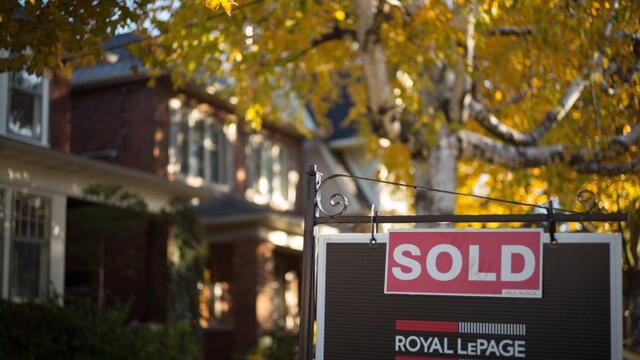COVID-19 slows Hamilton’s real estate market significantly
Published May 8, 2020 at 2:33 pm

The real estate market in Hamilton and Burlington has taken a big hit in the last month, according to statistics from the Realtors Association of Hamilton-Burlington (RAHB).
The real estate market in Hamilton and Burlington has taken a big hit in the last month, according to statistics from the Realtors Association of Hamilton-Burlington (RAHB).
RAHB reports that there were 482 sales of residential properties in its market (an area that encompasses Hamilton, Burlington, Haldimand and Niagara North) processed through MLS in April.
The numbers show that sales are down a whopping 63.4 per cent from the same period last year and 56 per cent from March.
“The beginning of the year was quite active and we were anticipating a busy Spring; however, the number of new listings and sales within the RAHB market area for April were down compared to the previous month and year as a result of the measures that were taken by the province and my fellow realtors to slow the spread of COVID-19,” said RAHB President Kathy Della-Nebbia in RAHB’s monthly report.
The average price for residential properties was $614,412, which is up 4.3 per cent from April last year, but down 6.6 per cent from last month.
In response to the pandemic, realtors have been forced to find new ways to operate remotely and enable homebound clients to still access the market from the confines of their current home.
Della-Nebbia said virtual open houses and showings have allowed things to keep buzzing along, albeit at a slower rate.
The number of sales for single-family properties within the RAHB market decreased by 60.8 per cent compared to the same month last year, the report finds, and the average sale price increased by two per cent.
Townhouse sales activity across the market area decreased from April 2019 by 67.1 per cent, and the average townhouse sale price increased by 8.8 per cent to $545,821.
Apartment-style property sales decreased by 70.9 per cent from April 2019, and the average price decreased by 3.8 per cent.

“In Hamilton, where we have the most activity,” Della-Nebbia explains, “there was a larger drop in the average price week-over-week, but it began to increase nearing the end of the month.”
The RAHB market is not alone in feeling the pinch of COVID-19: home sales across the GTA plunged 67 per cent in April the Toronto Regional Real Estate Board (TRREB) reported this week.
As for when sales will begin to recover, it’s impossible to say—but parts of the economy are slowly beginning to reopen.
Provincial, local and federal officials say they’re making cautious plans to relax or remove restrictions that were put in place in mid-March to slow the spread of the novel coronavirus, which has been blamed for more than 1,300 deaths in Ontario.
Most recently, the Ontario government said it will be allowing all retail stores with a street entrance to provide curbside pickup and delivery, as well as in-store payment and purchases at certain businesses.
But while the economy is slowly opening, Ontario recently announced it’s extending its emergency orders. The orders, which were set to expire May 6, include the closure of non-essential businesses, the prohibition of public gatherings of more than five people, and the closure of outdoor amenities such as playgrounds.
They have now been extended for another two weeks, to May 19.
“Past recessions and recoveries do not necessarily provide the best guide as to how the housing market will recover from the impact of the COVID-19 pandemic,” TRREB chief executive John DiMichele said in a statement.
“A key factor for the housing market recovery will be a broader reopening of the economy, which will result in an improving employment picture and a resurgence in consumer confidence.”

— With files from Ashley Newport and The Canadian Press
insauga's Editorial Standards and Policies advertising





